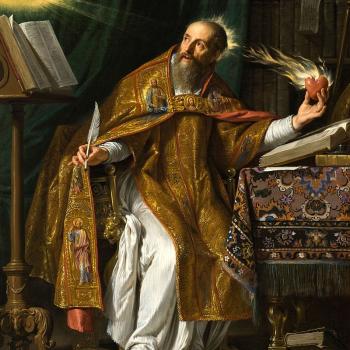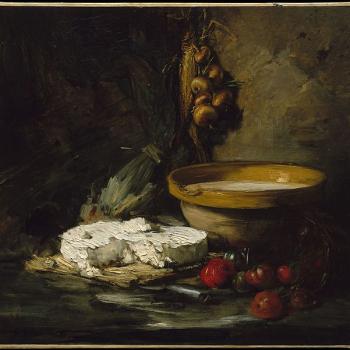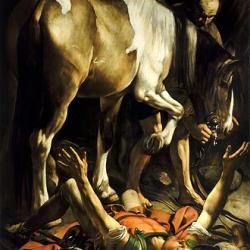There is more to Christmas than just Christ’s birth. It serves as the beginning of an epic, and Advent is the prologue whereby we prepare for the first spellbinding chapter.
Avellina Balestri, And Thy Word Broke Their Swords: The Empowering Depth and Dimension of Christmas (December 19, 2016) OnePeterFive
There is only so much time one has in the given 24 hours granted to us each day in order to enjoy all the various and splendid bits of creative writing spread out in all the libraries and bookstores across the globe and now conveniently stored on the internet for easy access and use. With a smogersburg and plethora of things to read, it’s easy to overlook some things you might have otherwise enjoyed reading if you knew they existed.
I am a thirty-three-year-old man applying for a job as an elf. I often see people on the streets dressed as objects and handing out leaflets. I tend to avoid leaflets but it breaks my heart to see a grown man dressed as a taco. This afternoon on Lexington Avenue I accepted a leaflet from a man dressed as a camcorder. Hot dogs, peanuts, tacos, video cameras, these things make me sad because they don’t fit in on the streets. In a parade, maybe, but not on the streets. I figure that at least as an elf I will have a place; I’ll be in Santa’s Village with all the other elves. We will reside in a fluffy wonderland surrounded by candy canes and gingerbread shacks. It won’t be quite as sad as standing on some street corner dressed as a french fry.
David Sedaris, Holidays on Ice (2009)
So with that in mind, I have gathered some interesting, insightful, inquisitive and imaginative thoughts about the upcoming joyful, festive and merry celebration of X-MAS for you all to enjoy, reflect and ponder as once December 25th comes down your chimney, several fascinating aspects of the holiday hibernate till the following year. So harness your reindeer and fly off into some
Christmas Thoughts During Advent
First off if your bothered by the term
X-MAS
The “X” in X-mas is not really an “X” at all. It’s chi, the Greek letter at the start of the word Christ, or Christos (Χριστός). Since the earliest era of political Christendom, “X” has been used as a shorthand for Christ.
Constantine, the first emperor to convert to Christianity and whose Edict of Milan sought to free Christians from persecution, instructed his soldiers to inscribe the letter on their shields before the landmark Battle of Milvian Bridge. The chi “X” was paired with “P,” representing the Greek letter rho, the first two letters of and a signifier for the name Christ. Legend has it, the chi rho symbol came to Constantine in a vision.

Using “X” as an abbreviation for Christ is also thought to have appeared in many Greek manuscripts of the New Testament.
Griffin Paul Jackson, Keep the X in X-Mas (December 21, 2018) Christianity Today
ADVENT: Preparing for Christmas
Already we are sensing a gathering momentum as Christmas approaches. There are gifts to be carefully chosen, cards to be written and mailed, office parties and family gatherings to attend — and, of course, the vital preparations for Christmas itself, decorations, and trees and meals, and so on. I do hope you enjoy all of these activities! Christmas is certainly about rejoicing, and a lot of hard work has to go into preparing a good celebration.

And so we are caught up in the unreality of both celebrating and preparing for Christmas — as if we are preparing to celebrate something we are already celebrating. But that is actually a very good description of Advent: We are preparing to celebrate the coming of the Lord, which has already taken place at the Nativity and is still to happen at the end of time. The Lord has come and the Lord is coming to save us. That is the lens through which we need to see the readings of Advent. Brandon McGinley, Advent Reflections: Meditations for a Holy Advent (2019) EWTN Publishing, Inc..
As your preparing it’s good to have a
DAVE BARRY 2020 GIFT GUIDE
But the point is, we can celebrate the holidays, but we need to take certain precautions this year. Specifically, we need to follow the Centers for Disease Control’s pandemic holiday guidelines, which include:
MISTLETOE: Everyone within 25 feet of a mistletoe sprig must wear a hazmat suit.
CHRISTMAS TREES: According to the CDC, it is “unlikely” that the coronavirus can be transmitted via Christmas trees, but out of an abundance of caution, CDC guidelines state that you should keep your tree quarantined outdoors “until all the needles fall off, or Easter, whichever is later.”
CAROLING: When singing “The Twelve Days of Christmas,” carolers should stop after Day Ten, to avoid the emission of saliva droplets caused by singing the words “pipers piping.” Also, in “Deck the Halls” carolers should sing the “fa la la la la” parts directly into their elbows.
EGGNOG: If you’re planning to serve eggnog in a communal punch bowl, CDC guidelines state that your eggnog recipe should “meet the same requirement for alcohol content — 60 percent or higher — as hand sanitizer.”
CANDLES: There should be no candles within 250 feet of the eggnog.
FRUITCAKE: Under no circumstances should you allow fruitcake into your home. This is not because of the coronavirus. This is because, according to the CDC, “fruitcake sucks.” Also, you should go easy on the figgy pudding, because — again, quoting the CDC — “That stuff will give you a bad case of wassail.”
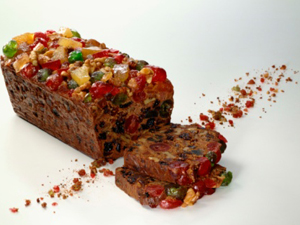
Of course these are just a few of the CDC’s holiday guidelines, which run to 237 pages in the full document, titled “Let’s Have A Fun Holiday Season By Reducing Our Risk Of Death.” We urge you to read the whole thing, maybe after a couple of eggnogs.
Dave Barry, Dave Barry’s 2020 Holiday Gift Guide, (December 3, 2020) Miami Herald
We remember the gifts that may have been given in various places and various times such as during WW1
GIFTS IN THE TRENCHES
Yesterday about four-o’clock in the afternoon there was a fierce and terrible onslaught of Christmas packages onto our trenches. No man was spared. However, not a single package fell into the hands of the French. In the confusion, one soldier suffered the impaling of a salami two inches in diameter straight into his stomach. … Another had two large raisins from an exploding pastry fly directly into his eyes…. A third man had the great misfortune of having a full bottle of cognac fly into his mouth.
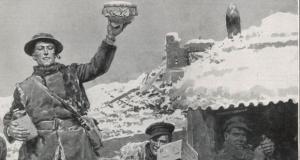
One German soldier, realizing that in their comfortless trenches such gifts were mere Weihnachtspakete to men without a Mädel to deliver them at the traditional Bescherung ceremony on Christmas Eve, wrote a plaintive “Notschrei aus den Argonnen” to his hometown newspaper:
I wear love’s gloves on my hands,
Love’s leggings warm my thighs,
Love’s tobacco fills love’s pipe,
In the mornings I wash with love’s soap.
For loving gifts, a thank-you letter:
Warm is love’s cap against my skull;
I sigh to myself, “So much love—and no girl!”
Stanley Weintraub, Silent Night: The Story of the World War I Christmas Truce (2001)
We remember places that were an epicenter of gift giving such as a
Department Store At Christmas in 1940
This was the heyday of the Seven Dwarfs and their virginal den mother, Snow White. Walt Disney’s seven cutiepies hammered and sawed, chiseled and painted while Santa, bouncing Snow White on his mechanical knee, ho-ho-ho’d through eight strategically placed loudspeakers—interspersed by choruses of “Heigh ho, heigh ho, it’s off to work we go.” Grumpy sat at the controls of a miniature eight-wheel Rock Island Road steam engine and Sleepy played a marimba, while in the background, inexplicably, Mrs. Claus ceaselessly ironed a red shirt.
Sparkling artificial snow drifted down on Shirley Temple dolls, Flexible Flyers, and Tinker Toy sets glowing in the golden spotlight. In the foreground a frontier stockade built of Lincoln Logs was manned by a company of kilted lead Highlanders who were doughtily fending off an attack by six U.S. Army medium tanks. (History has always been vague in Indiana.) A few feet away stood an Arthurian cardboard castle with Raggedy Andy sitting on the drawbridge, his feet in the moat, through which a Lionel freight train burping real smoke went round and round.

Dopey sat in Amos and Andy’s pedal-operated Fresh Air Taxicab beside a stuffed panda holding a lollipop in his paw, bearing the heart-tugging legend, “Hug me.” From fluffy cotton clouds above, Dionne quintuplet dolls wearing plaid golf knickers hung from billowing parachutes, having just bailed out of a high-flying balsawood Fokker triplane. All in all, Santa’s workshop made Salvador Dali look like Norman Rockwell. It was a good year. Maybe even a great one. Like a swelling Christmas balloon, the excitement mounted until the whole town tossed restlessly in bed—and made plans for the big day.
-Jean Shepherd, A Christmas Story (1983)
When it comes to gift giving there is no better representative of this then good Ol …
FATHER CHRISTMAS
I’ve never seen the inside of a mine shaft, and thank God I never will. But the groan of the Cape Breton coal mines echoed through the years even so, in part because one of the few possessions my grandfather took with him when he travelled west was a bit of family lore, one nurtured in those very coal mines.
Who do children wait for on Christmas Eve? Father Christmas. And how does he enter homes? Down though chimneys and up though stove popes and although he’s always depicted as wearing velvet red, spotlessly clean, his travels would have marked him. Travels always do. And as any person-a miner, say-who’s dealt with coal knows, if you spend your time crawling through chimney’s, you’re going to get covered in soot. It gets inside your lungs and grits your eyes, streaks white beards with grey and turns grey beards black. And so it was with Father Christmas. When he tiptoed through houses, late at night, covered in soot, he would stop to kiss the children on the forehead while they lay sleeping, and when they woke on Christmas morning… coal dust kisses.
― Will Ferguson, Coal Dust Kisses: A Christmas Memoir (2010)
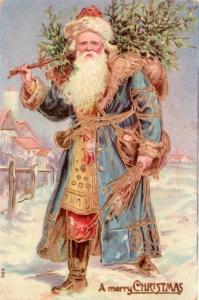
“I hope you will like the little things I have sent you. You seem to be most interested in Railways just now, so I am sending you mostly things of that sort. I send as much love as ever, in fact more. We have both, the old Polar Bear and I, enjoyed having so many nice letters from you and your pets. If you think we have not read them you are wrong; but if you find that not many of the things you asked for have come, and not perhaps quite as many as sometimes, remember that this Christmas all over the world there are a terrible number of poor and starving people. I (and also my Green Brother) have had to do some collecting of food and clothes, and toys too, for the children whose fathers and mothers and friends cannot give them anything, sometimes not even dinner. I know yours won’t forget you. So, my dears, I hope you will be happy this Christmas and not quarrel, and will have some good games with your Railway all together. Don’t forget old Father Christmas, when you light your tree.”
― J.R.R. Tolkien, Letters from Father Christmas
Santa’s overall message leads one to thoughts of
Comfort and Joy and Challenge…
The gratuitous nature of goodness is the message of Santa Claus – that we are here through no merit of our own and live lives filled with breathtaking beauty and undeserved blessings. These things are true, even if there are no such things as flying reindeer to deliver them by sleigh, or a workshop full of elves somewhere above the arctic circle busily crafting them for our enjoyment. The truth is, there are better things even than these – nine choirs of flying angels bearing God’s gifts, and an eternal kingdom full of saints drawn from the lowliest places of the earth, praying for our salvation somewhere above the heavens.
Steve Skojec. The Ethics of Jolly Old Elfland (November 30, 2018)
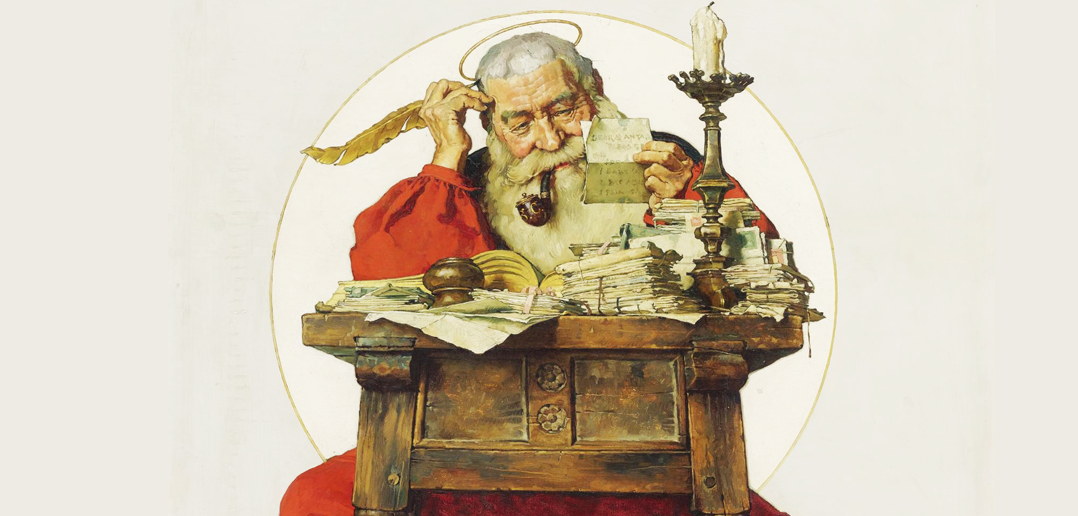
Believe you me, having to smile and be jolly every day when you’re wearing the same thick, hot, red wool suit (that itches like crazy) is no picnic. This is a job that will definitely strain your sanity and drain your ego if you let it. Seems like everyone wants a piece of me. Yet many of the people I serve question my existence…or just plain don’t believe in me at all. And those who do believe often expect me to do the impossible—rarely caring about what I have to do, or go through (including chimneys), to meet their expectations.
And they ALL have expectations. Give people exactly what they want, and Ho, Ho, Ho—everybody loves good Ol’ Santa. But miss one or two items on the list—or forget to include the batteries—and you’d better be ready for the alligator tears, the fat jokes, the stupid songs, no cookies, the wet laps, the yanks on the beard, and the “I could do Santa’s job better than Santa” remarks. And that’s only half of why it’s not easy being me.
Eric Harvey, The Leadership Secrets of Santa Claus (2015)
Santa usually brings some long overdue
Merriment
“Merriment,” necessitates fellowship. People usually do not make merry alone in a room; they make merry at a festival or a great banquet—hence the phrase, “the more the merrier.” At least to our mind, merriment presupposes strong community and a truly divine and memorable reason to celebrate: think of how absurd it would be to say “Merry Administrative Professionals’ Day.”
But “Merry Christmas” still has real theological meaning, and not just because Christ’s Mass is mentioned. When we wish someone to be merry on Our Lord’s birthday, aren’t we hoping that he or she will have more than just a good time? Aren’t we invoking a kind of blessing upon them? There is almost something sacred about real merriment. Of course, all of this involves risk: there is an obsolete term in English, “merry-drunk,” that suggests as much.
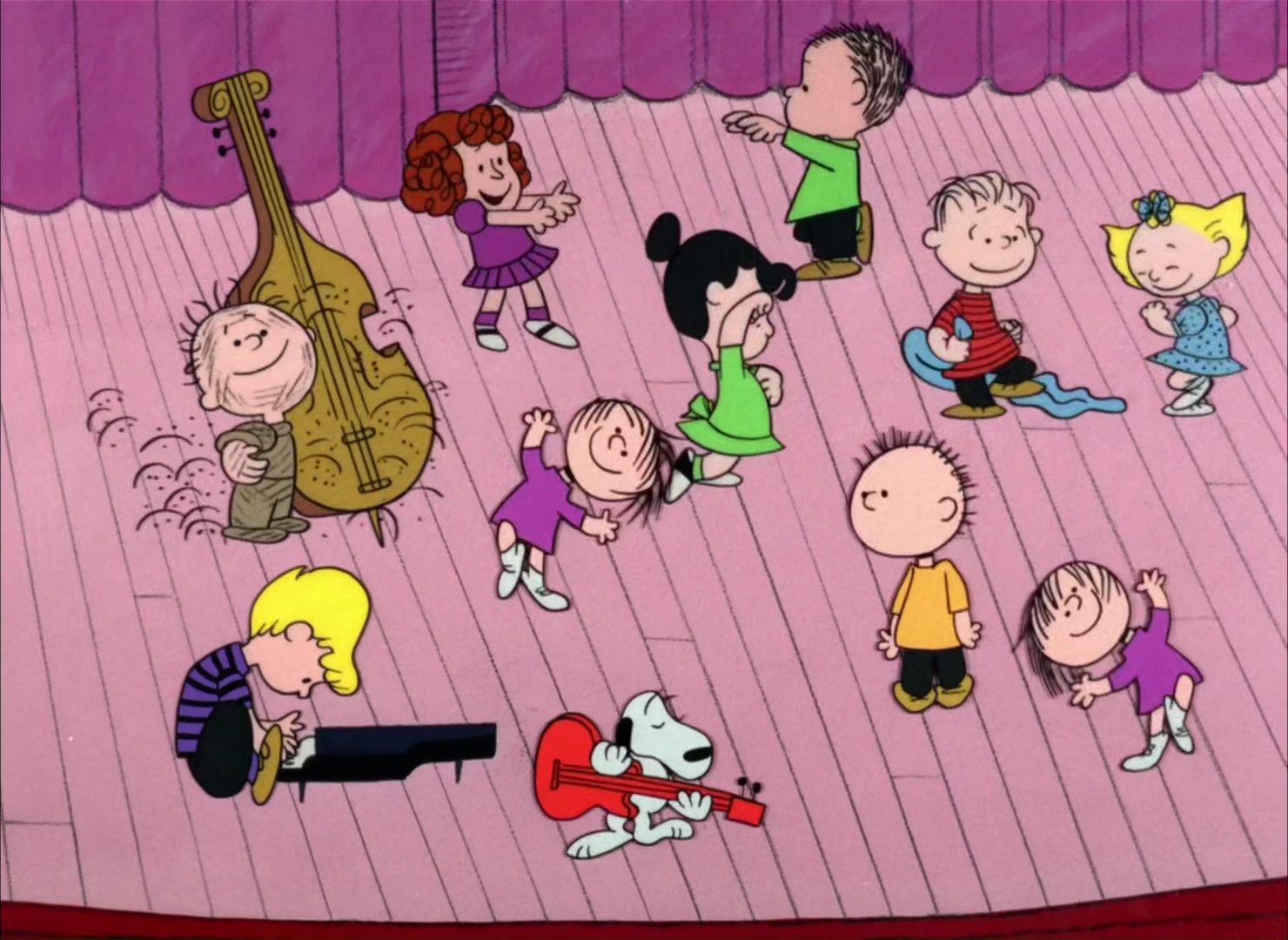
But as Josef Pieper points out in his work In Tune with the World: A Theory of Festivity, all festivity contains “a natural peril and a germ of degeneration” because all festivity carries with it an element of lavishness. But just as lavishness need not involve decadence, “wet” merriment need not involve drowning.
Michael P Foley, Drinking with Saint Nick: Christmas Cocktails for Sinners and Saints (2018)
Some of the Merriment is in learning about particular customs and traditions of Christmas such as
Christmas Colors
The first hue to be linked with Christmas was probably green. Long before Christ was born, green had been a powerful symbol of mystery and life. Ancient cultures observed the fir trees and holly bushes growing in the midst of the harshest winters and were fascinated. When all other plants had died or grown barren, the people of the woods believed that some type of magical power had to be fueling these evergreens’ survival.

Because of this flourishing life when there seemed only to be death, these green survivors were both worshiped and feared. Some folks felt that evil had given the evergreen plants the power to evade the natural order of the seasons. Others taught that the gods had breathed life into them to preserve a bit of beauty during the bleak days of winter. While early humankind did not comprehend what made these plants live year-round, most cultures, especially in Europe, came to think of green as the color of life.
Ace Collins, Stories Behind the Great Traditions of Christmas (Stories Behind Books) (p. 77)
Some of the Merriment is in eating and learning about Christmas Foods like….
Gingerbread
Gregory became a bit of a popular holy man in the French countryside, attracting “bourgeois and peasants alike” whom he would offer his Eastern hospitality to, “finishing the meal with a cake that he made himself, according to a recipe from his country, and comprising of honey and spices, in the fashion of his far away homeland in Armenia.”
This is recorded, according to several sources, in a 10th century manuscript from the Micy Abbey, a Benedictine monastery in the region in which it is recounted that Gregory made, by hand, cake with honey and spices, “just like in his homeland.”
Thanks to Gregory, Pithiviers retained its rich gingerbread making tradition until this day – a “Saint Gregory of Nicopolis Gingerbread Brotherhood” or Brotherhood “du Pain d’Epices” if you’re French and fancy exists in the region, making gingerbread “according to the recipe passed down by Saint Gregory the Armenian.”
Liana Aghajanian How an Armenian Monk Brought Gingerbread to the West, (December 23, 2014) ianyanmag.com
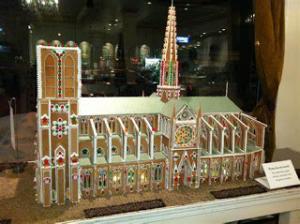
Now, nobody knows about the exact origin of the gingerbread house, but here’s what we do know. Gingerbread was probably introduced to Europe by an Armenian monk in the 10th century. Apparently, he taught the art of baking gingerbread to Christian priests in France.
The Gingerbread Man has his origins in England. The English claim to be the first to bake and sell gingerbread, and they introduced the idea of the Gingerbread Man. Gingerbread was a much-loved treat in festivals and fairs in medieval Europe. It was shaped and decorated to look like many attractive things – birds, animals, flowers and armor. Gingerbread fairs were universally popular in those days.
Indeed, the young ladies of those days offered their favorite knights a piece of gingerbread to wish them luck in a competition. There was also a tradition of young women eating a “gingerbread husband” secretly hoping to find someone really special.
Gingerbread was prepared in a majority of monasteries, churches and other religious institutions in Europe. The Swedish nuns, for instance, used to bake them and even sold them to the public to raise money for charity. Gingerbread was also available for sale in pharmacies and farmers’ markets.
Gingerbread House History, Gingerbread Traditions Inc.
Some of the Merriment is in learning about and singing
Christmas Carols and Hymns
Christmas carols were given to us by God to preserve the glorious reality of the Incarnation and Christology in general – through whatever horrors and distortions the modern world has to throw at the Faith.
Hilary White Silent night (Dec 24, 2018) whatisupwiththesynod.com

A few hours later the two friends met at St. Nicholas. There, in a candlelit sanctuary, Gruber shared his new music with Mohr. The priest approved, and after learning the guitar chords, rushed it to the choir members, who were waiting for their scheduled rehearsal.
What should have taken weeks was accomplished in hours. In the little time they had, Mohr and Gruber taught the choir members the four-part harmonies to the last two lines of each verse. Just after midnight, Mohr and Gruber stood in front of the main altar and introduced their simple little song.
As they sang, they couldn’t have guessed that “Stille Nacht! Heilige Nacht!” would be remembered not only the next Christmas in their small village, but almost two hundred years later, around the world.
Ace Collins, Stories Behind the Best-Loved Songs of Christmas (p. 156).

“When I wrote this thing about Mary,” Mark explained, “I began by thinking I was interviewing her on her thoughts of being a mother to Jesus. A couple of the lines I wrote really stood out, like ‘when you kiss your little baby, you’ve kissed the face of God.’ I just thought this needed to be a song.”
Ace Collins, Stories Behind the Best-Loved Songs of Christmas (p. 116)

“Mary did you know”, Um, yes, she knew and it all sucked. That is what makes her faith so amazing, she knew and it sucked and she said yes to it all anyway, even the parts she later figured out. Even at the foot of the Cross.
Leticia Adams First Day of Advent: Suffering Sucks (December 2, 2018) Through Broken Roses
Some of the Merriment is in reading Christmas Stories.. but not necessarily
Hans Christian Andersen Christmas Stories
The Christmas-story writer has to walk a narrow tightrope between sentiment and skepticism, and most writers end up falling off into either cynicism or mawkish sappiness. And, yes, I am talking about Hans Christian Andersen. He invented the whole three-hanky sob story, whose plot Maxim Gorky, in a fit of pique, described as taking a poor girl or boy and letting them “freeze somewhere under a window, behind which there is usually a Christmas tree that throws its radiant splendor upon them.” Match girls, steadfast tin soldiers, even snowmen (melted, not frozen) all met with a fate they (and we) didn’t deserve, especially at Christmas. Nobody, before Andersen came along, had thought of writing such depressing Christmas stories.

Even Dickens, who had killed a fair number of children in his books, didn’t kill Tiny Tim. But Andersen, apparently hell-bent on ruining everybody’s holidays, froze innocent children, melted loyal toys into lumps of lead, and chopped harmless fir trees who were just standing there in the forest, minding their own business, into kindling. Worse, he inspired dozens of imitators, who killed off saintly children (some of whom, I’ll admit, were pretty insufferable and deserved to die) and poor people for the rest of the Victorian era.
Connie Willis, A Lot Like Christmas: Stories (2017)
And I want to conclude with the Merriment that comes in the forgiveness with Christ’s birth, the forgiveness we grant to one another in
Christmas Amnesty
“You can fall out of contact with a friend, fail to return calls, ignore e-mails, avoid eye contact at the Thrifty-Mart, forget birthdays, anniversaries, and reunions, and if you show up at their house during the holidays (with a gift) they are socially bound to forgive you—act like nothing happened. Decorum dictates that the friendship move forward from that point, without guilt or recrimination.
If you started a chess game ten years ago in October, you need only remember whose move it is—or why you sold the chessboard and bought an Xbox in the interim. (Look, Christmas Amnesty is a wonderful thing, but it’s not a dimensional shift. The laws of time and space continue to apply, even if you have been avoiding your friends. But don’t try using the expansion of the universe an as excuse—like you kept meaning to stop by, but their house kept getting farther away. That crap won’t wash. Just say, “Sorry I haven’t called. Merry Christmas” Then show the present.

Christmas Amnesty protocol dictates that your friend say, “That’s okay,” and let you in without further comment. This is the way it has always been done.)”
― Christopher Moore, The Stupidest Angel: A Heartwarming Tale of Christmas Terror
Happy Advent and Merry Christmas
Jesus was a little baby once. Before Christmas, He was a fetus in Mary’s womb–literally abiding in her flesh, having taken his DNA structure from her, and until his birth, taking in nourishment from her blood, his tiny heart beating beneath her Immaculate heart. Those were His real lungs sucking in air for the first time in that manger on the day He was born.
On her lap, He weighed no more than a laptop. Jesus was flesh of her flesh, bone of her bone–and smile of her smile, as she tickled Him and dried Him and held Him up to her breast to feed him. So eventually He could feed us. .
–Bud Macfarlane Understand the “And” CatholiCity





